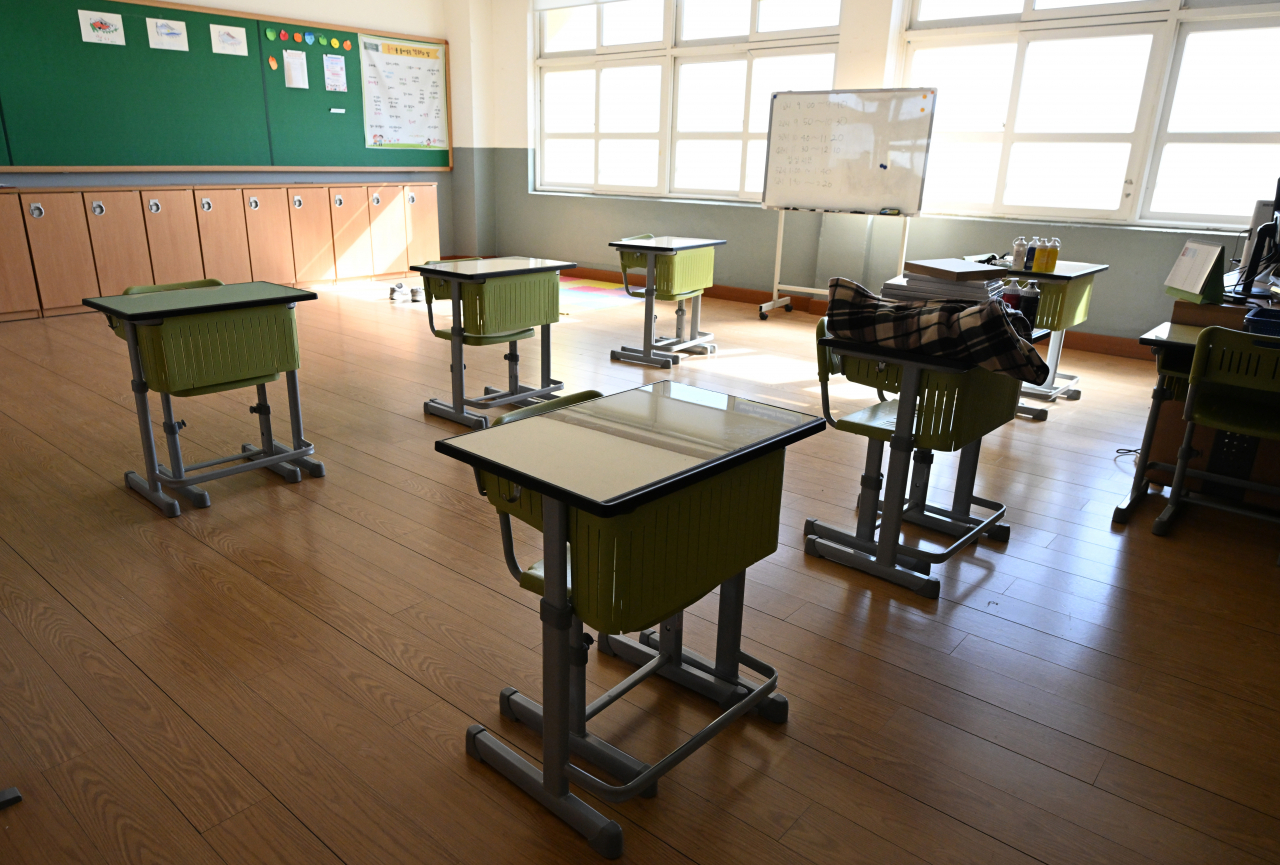Schools brace for impact of record-low enrollment
Experts warn of domino effect from teachers losing jobs to decline in labor force, purchasing power
By Choi Jeong-yoonPublished : Dec. 3, 2023 - 15:44

South Korea is set to record the lowest number of first graders entering elementary school next year, signaling the consequences of an apparent demographic crisis driven by the world’s lowest birth rate.
According to local reports quoting the statistics agency's birth rate data, fewer than 400,000 children are expected to enter elementary school next year. This will be the first time the number has dropped below 400,000 since the agency started compiling data.
This comes amid a sharp decline in the number of infants born in 2017, who will be entering elementary school in March next year.
According to Statistics Korea, the number of births fell from over 406,000 in 2016 to 357,771 in 2017, a drop of nearly 50,000. The number of students who had become first graders this year, meaning those born in 2016, barely passed the 400,000 mark, at 401,752.
Once the Ministry of Public Administration and Security compiles a list of school-age children based on the residential population, local administrative authorities send enrollment notices to parents of soon-to-be first graders by Jan. 20.
The number of first graders does not completely correspond to the number of babies born in the year of enrollment, as deaths, early and late enrollments as well as foreigners living in the country also are taken into account. However, the impact of those variables is not significant, as the number of this year's first graders was just 5,000 fewer than births in 2016.
With enrollment into education struggling to reach the 400,000 mark, experts say the “crisis” has already been foreseen.
“The decline in the number of first graders is something that doesn’t happen in a day. It was an apparent problem that could be predicted in 2017 when the number of newborns plummeted," said Cho Young-tae, head of the Population Policy Research Center at Seoul National University.
The problem is the lack of realization on the part of people and government officials concerning the impact this simple number can have on society.
“This is not just a single ‘birth rate’ issue. The system of education will implode with the current rate of decline in birth rate and the number of children being born every year," the expert said. "There will be a domino effect, everything is connected."
From school-related businesses, such as stationery and other stores in front of schools, to the $16 billion private education industry in Korea being influenced by the impact, teachers losing jobs and the breakdown of Korean education will be inevitable, predicts Seol Dong-hoon, a sociology professor at Jeonbuk National University.
The professor points out that the rapid decline in student enrollment will have socioeconomic side effects, such as the long-term stagnation of low growth due to a decline in the labor force and purchasing power.
With an aging society, when the first graders of 2024 grow and advance into young age groups, society will face an immense burden of taking care of social elders, putting national pensions in jeopardy, according to Seol.
Both experts emphasized South Korea's depopulation issue should not be approached only by encouraging births, but should be considered "a matter of life and death."
If the country's birth rate, which stands at 0.81 child on average born per woman in her lifetime, is not addressed with appropriate policy responses, the growth rate will plunge below zero percent by 2050 and the total population will fall below 40 million by 2070, according to the Bank of Korea's Economic Research Institute. The typical replacement birth rate for a steady population is 2.1.
If the trend continues, South Korea will not only become a superaged society with 20.3 percent of the population aged 65 and over in 2025, but will also surpass Japan in 2046 to become the country with the largest proportion of aged people among member nations of the Organization for Economic Cooperation and Development, according to the central bank.



















![[Today’s K-pop] Treasure to publish magazine for debut anniversary](http://res.heraldm.com/phpwas/restmb_idxmake.php?idx=642&simg=/content/image/2024/07/26/20240726050551_0.jpg&u=)